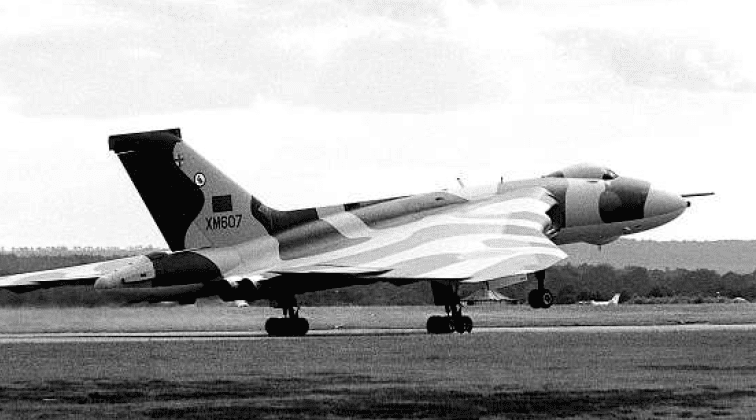Built as a Cold War nuclear bomber, the Vulcan saw action only at the very end of its service life. François Prins has the story of its use in the Falklands.
Although the three V-bombers – Valiant, Vulcan and Victor – were intended to counter the threat by the former Soviet Union, two of the trio found fame a long way from Europe when they took part in operations to retake the Falkland Islands in 1982. One as a conventional bomber, the other as an aerial tanker.
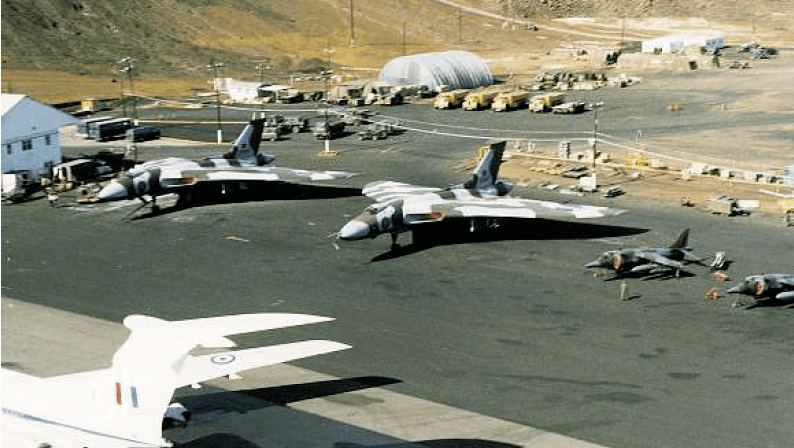
Argentine armed forces invaded British Sovereign territory in March 1982 when they decided that the Falkland Islands in the South Atlantic were theirs for the taking. However, the Prime Minister of the day, Margaret Thatcher, thought otherwise and backed by the government and most of the House of Commons, a task force was assembled to retake the British dependency. Operation Corporate was fought 8000 miles from the UK by land, sea and air elements.
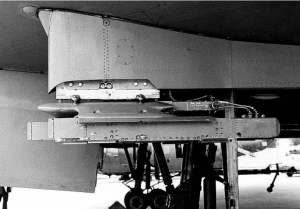
What concerns us here is the use of two former RAF nuclear V-bombers – the Avro Vulcan, operating as a conventional bomber, and the Handley Page Victor, supplying the tanker element. By March 1982, only three squadrons of Vulcans remained operational and they were scheduled to be withdrawn by June 1982. Already most of the Vulcan force had been declared surplus and sold off or relegated to museums and scrap or fire dumps.
On 5 April, all this changed when RAF Waddington personnel were instructed to reinstate the in-flight refuelling system, which had been discontinued some years previously, to 10 Vulcans. Although the refuelling probes and plumbing were still in place on most aircraft, the years of inactivity had caused the system fixtures to deteriorate and they needed to be renewed. Added to this, probes had been removed from many Vulcans and been fitted to Nimrods and Hercules for longrange operations in the South Atlantic.
PREPARATIONS
Ten aircraft drawn from 44 and 50 Squadrons were surveyed at RAF Waddington and restored to full operational status. Of these, five – XL391, XM597, XM598, XM607 and XM612 – were selected for conversion back to the conventional bombing role. They were the only Vulcans that remained in service which had complete Skybolt attachment points and the associated ducts for routing cables to underwing hardpoints.
Given the operation codename ‘Black Buck’, the aircraft were made ready to carry 21 1000lb HE bombs. They were also fitted with a Carousel INS inertial navigation system and underwing pylons to carry Westinghouse AN/ALQ-101 ECM pods. These were usually to be found on Buccaneers and had to be quickly adapted for the Vulcan.
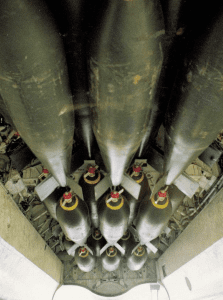
Five crews were selected for Black Buck and training for aerial refuelling commenced on 14 April. Normally such training is carried out over several months, but now the crews were given just 13 days to master the skill. Although the refuelling probes had been serviced, they had suffered through lack of use and when initial link-ups were made, the probe did not lock in correctly, with the result that fuel spilled and washed over the Vulcan’s windscreen, obscuring the pilot’s vision – not to be recommended at this crucial stage. A quick modification was made by fitting two rows of flat plates directly ahead of the cockpit which directed the fuel spill from the windscreen. Not ideal, but it worked .
Night refuelling practice was started on 15/16 April, which was important for the Victor tanker crews too, as they had not carried out this operation at night either. Training sorties continued by now down to 200ft with the crews growing in experience and confidence.
It had been hoped that a political solution, rather than a military option, could be found for the Falklands crisis, but the Argentine martial government showed no interest in the discussions. On 29 April, Vulcans XM607 and XM598 took off from RAF Waddington en route for Wideawake Air Base on Ascension Island; XM597 also departed as a reserve aircraft but later returned to Waddington. The two Vulcans were supported by Victor tankers and made the 4100 mile journey to Ascension with no technical problems. When the crews arrived at Ascension, they had taken part in only one night-refuelling exercise.
BLACK BUCK OPERATIONS
Shortly before midnight on 30 April 1982, the two Vulcans, XM598 as the primary aircraft with XM607 as reserve, taxied out to the runway atWideawake on Black Buck 1, accompanied by four Victor tankers. Ahead lay their target, Stanley airfield on the Falkland Islands some 3400 miles away. Each Vulcan carried a full bomb and fuel load taking the maximum all-up weight to 210,000lb.
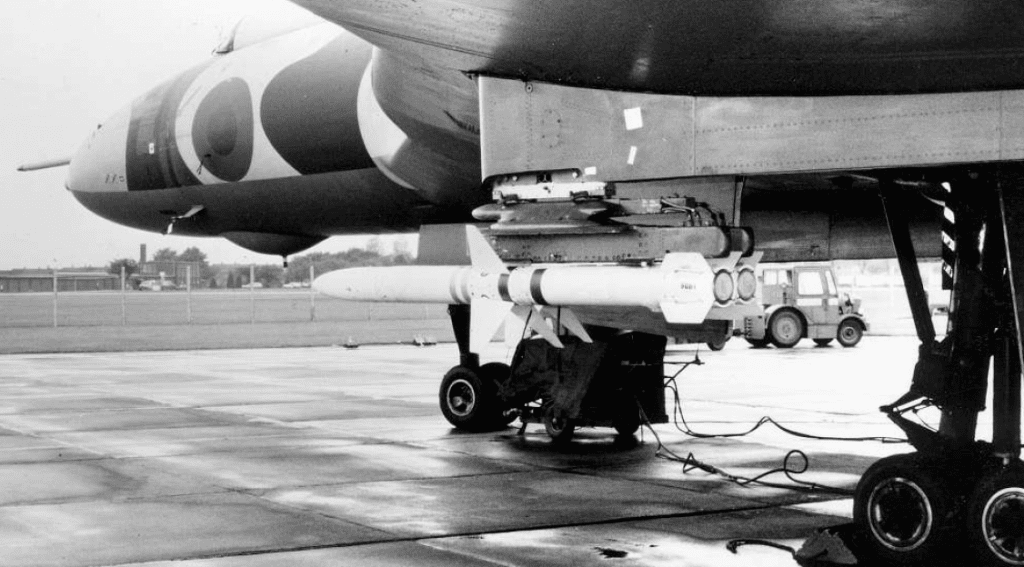
At one-minute intervals with navigation lights off and in total radio silence, the aircraft took off; they were followed by a second wave of seven Victor tankers. Once airborne, the Vbomber fleet climbed to 27,000ft and turned south. Unfortunately, XM598 reported problems with cabin pressurisation and XM607, captained by Flight Lieutenant Martin Withers, took over as the primary aircraft. On board with Withers were Flying Officer Peter Taylor (co-pilot), Flight Lieutenant Gordon Graham (navigator), Flight Lieutenant Bob Wright (radar plotter), Flight Lieutenant Hugh Prior (air electronics officer) and Flight Lieutenant Richard Russell (air-to-air refuelling instructor).
The formation climbed to 33,000ft and settled on a speed and altitude that was suitable for both types of aircraft. It had been estimated that the Vulcans would have to refuel five times on the way to Stanley, but in the event they needed six transfers from the Victors.
As they flew south, the weather deteriorated but the formation continued towards their objective. After each refuelling, the Victors turned for home and eventually just two tankers (XH669 and XL189) remained with XM607. As they neared the Falklands, the weather got worse with gusting winds; Squadron Leader Bob Tuxford in Victor XL189 refuelled the Vulcan for the last time and then got ready to refuel the other Victor (XH669) flown by Flight Lieutenant Steve Biglands before turning for home leaving XH669 to make the final refuelling before the attack.
In appalling weather, Tuxford readied to refuel the second Victor, but the basket was weaving all over the sky making it difficult for Biglands to lock on; he did so but the probe broke and the fuel transfer was not completed.
There was only one alternative; the aircraft would have to reverse roles, with XH669 refuelling XL189 and for Tuxford to support the Vulcan. It was an awkward moment and the mission could have been called off, but Tuxford made the decision to proceed.
Biglands transferred what fuel he could spare and retained sufficient to get back to Wideawake, as with the broken probe he could not be refuelled. Tuxford refuelled XM607, enabling Black Buck 1 to continue, but this left him with insufficient fuel to reach Ascension without a further in-flight refuelling.
By now the other Victors had landed at Wideawake and one of them was quickly refuelled and launched to get to XL189 before it was too late. Tuxford continued his flight back to Ascension and was 600 miles away – with just 30 minutes of fuel remaining – when he saw the welcome sight of a Victor tanker out of Wideawake ready to refuel his aircraft. They locked on and a successful transfer of fuel was completed to allow XL189 to make a safe landing at Ascension. That was not the end of the mission as the Victor tankers were now ready to launch to bring the Vulcan back.
It must be stressed that all the air-to-air refuelling was carried out in total radio silence and transfers were made using three sets of lights: red – not ready or emergency; amber – tanker ready; and green – fuel flow. Had Bob Tuxford not made the decision when he did then the mission would have been aborted.
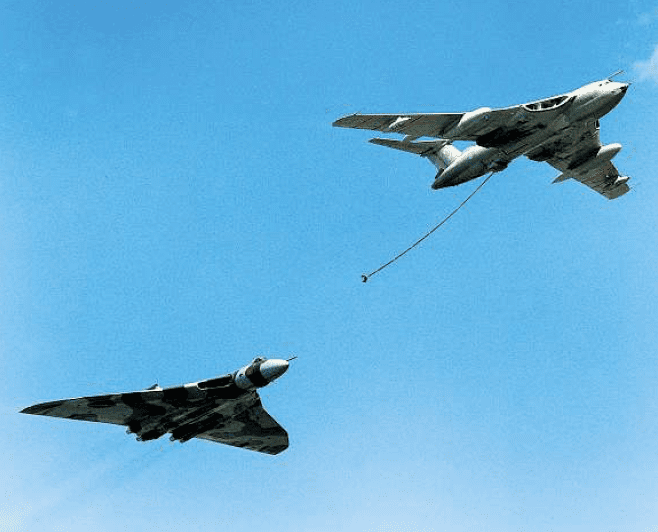
STANLEY BOMBED
Flight Lieutenant Martin Withers continued on the sortie to drop the 21 1000lb ‘iron’ bombs on Stanley’s runway from 8000ft at 04:38hrs local. As the Vulcan neared the islands, Withers descended to 300ft to evade radar before using the established ‘pop-up’ manoeuvre to climb to height for the bombing run. Although the aircraft was picked up by Argentine radar, the on-board ECM units were switched on and contact was lost. Withers took the Vulcan diagonally across the runway to ensure that at least one bomb would hit the concrete; five seconds was all it took to drop the 21 bombs.
At 07:46 Zulu the codeword ‘Superfuze’ was sent to RAF Strike Command at High Wycombe. It meant the Black Buck 1 had been successful and that the Vulcan was on its way back. It also signalled to the Argentine government that Britain was not about to let the Falkland Islands go. It further demonstrated that if the Vulcan could reach the Falkland Islands, it could easily reach Argentina itself.
Due to the weather conditions and the fuel burn, the Vulcan had used more than planned, but Victor tankers were standing by and a transfer took place off the coast of Brazil. In all, XM607 was air-refuelled 17 times by Victor K2 tankers and was airborne for 15 hours 45 minutes to complete the (then) longest bombing mission on record.
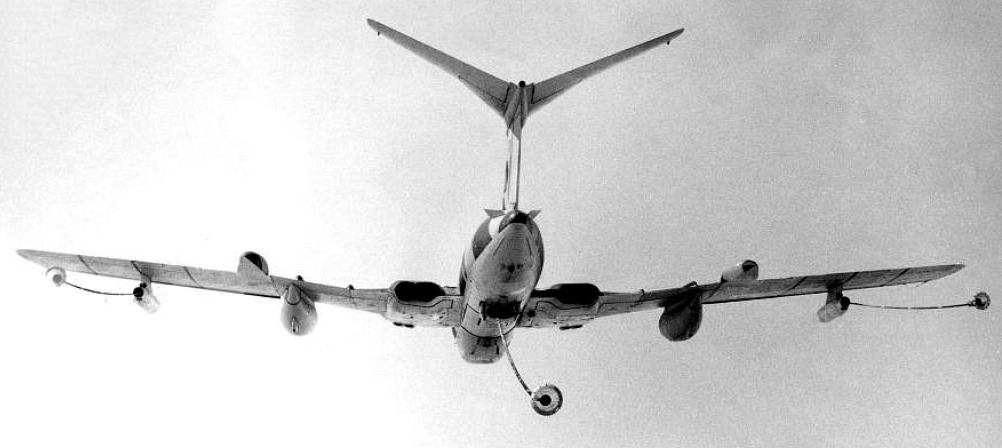
Vulcan XM607 touched down at Wideawake at 14:52 Zulu. This attack was followed at dawn by a low-level attack on the airfield by Royal Navy Sea Harriers operating from HMS Hermes. Withers was awarded the Distinguished Flying Cross and Tuxford the Air Force Cross.
The intention of the raid had been to deny the use of the runway to halt Argentine Dassault Mirage, Dassault Super Etendard and Douglas Skyhawks being deployed. In the event, reconnaissance photographs revealed that one bomb had struck the runway cutting it in half making it unusable by fast jets.
On the night of 3/4 May, a second Vulcan raid on Stanley, again using ‘iron’ bombs, was mounted with the same aircraft now captained by Squadron Leader R Reeve (with crew: Flight Lieutenant DT Dibbins, Flight Lieutenant MA Cooper, Flight Lieutenant J Vinales, Flight Lieutenant P Standing and Flight Lieutenant Barry Masefield) which made a safe return to Ascension to complete Black Buck 2. The bombs did not hit the runway but caused extensive damage to other parts of the airfield and to the Argentine forces stationed there.
Bad weather and strong headwinds en route led to the cancellation of Black Buck 3 on 16 May, planned as another bombing mission. During the next few weeks, Royal Navy Sea Harriers fought the Argentine Air Force and Armada (Navy) in the air while British troops gained a foothold on the Islands supported by RAF Harrier GR3s, some of which used ‘smart’ laser-guided bombs (LGB) for the first time.
Black Buck 4 was planned as the first antiradar attack to be flown by Vulcan XM597 armed with AGM-45A Shrike anti-radiation missiles, carried on underwing hardpoints. Squadron Leader Neil McDougall’s crew was briefed to attack Argentine air defence radars, but the mission was aborted following tanker problems.
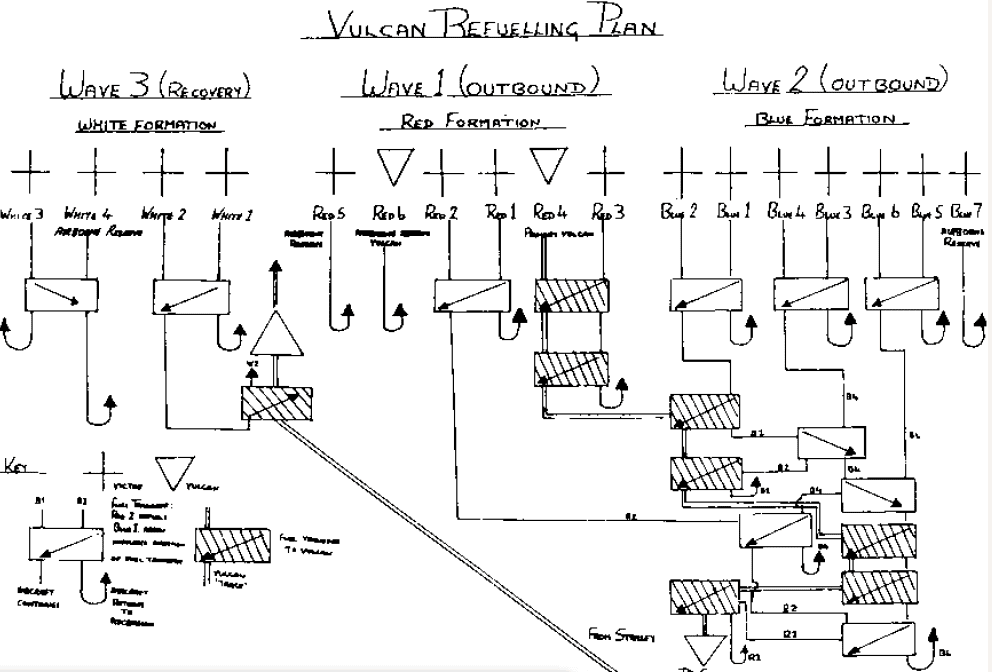
It was not until the night of 30/31 May that a third Vulcan sortie, codenamed Black Buck 5, was successfully launched from Ascension when Vulcan XM597 armed with two Shrikes attempted to take out Stanley airfield’s radar. Squadron Leader McDougall had to orbit the Falkland Islands for almost an hour before the Shrikes locked on to a TPS-43 surveillance radar aerial. The raid proved only a partial success with the Argentine radar back in operation within 36 hours of the attack.
One advantage of the anti-radar missions was that due to the reduced weapons payload, XM597 could carry extra fuel in the bomb bay tanks and would only require four air-refuelling sectors en route to the target.
A WEEK IN RIO
A second Vulcan anti-radar attack, Black Buck 6, was mounted on the night of 2/3 June, but was frustrated by the Argentines shutting down their radars before the missiles could lock on to any emissions. The crew had to tempt the Argentines to turn their gun-laying control radar back on by flying directly over Stanley airfield. The ploy worked and two Shrikes were launched, destroying a Skyguard radar.
Due to its low fuel state, XM597 egressed the target area and headed for the tanker rendezvous. However, the crew were to have more problems on the return flight following damage to the Vulcan’s refuelling probe, and were forced to divert to Rio de Janeiro, Brazil, after firing one of the two remaining Shrikes, the other failed to launch. Here the aircraft was impounded, the remaining missile confiscated, and the crew held for a week before being released to fly XM597 back to Ascension on 10 May.
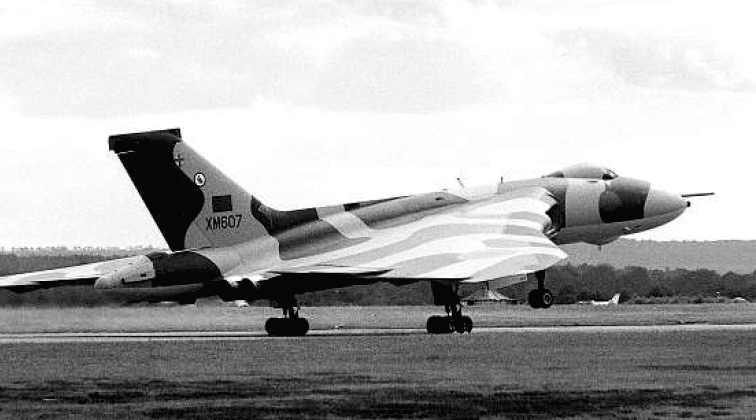
Bad weather during early June slowed the British advance to Stanley and another Vulcan raid was called for. The last heavy bomber raid of Operation Corporate, codenamed Black Buck 7, was also the last ever RAF heavy bomber sortie. The raid on the night of 12/13 June with XM607 and the same crew as Black Buck 1, with XM612 as reserve, saw anti-personnel air-burst bombs dropped on Stanley airfield. In XM607’s bomb bay were 1000-pounders and fused antipersonnel weapons to be used in support of the British troops now making their way across the island for a final showdown.
The following day, some 11,000 Argentine troops surrendered to British forces. During the eight-week conflict, Royal Navy Sea Harriers had borne the brunt of the air offensive, shooting down 20 enemy aircraft plus a number of probables, while RAF Harriers flew more than 120 close air support sorties, losing four aircraft to ground fire.
While only five Black Buck raids were successfully carried out, the record of its sister V-bomber, the Victor, must be acknowledged. Following the Argentine invasion of the Falklands and nearby South Georgia on 2 April, an RAF Victor was the first RAF aircraft to be committed to Operation Corporate. On 20 April, a Victor K2 flew from Ascension to make a radar search over 150,000 square miles of the Southern Atlantic around South Georgia. The flight lasted 14 hours 45 minutes, then the longest operational reconnaissance mission in history. The Victor tankers were to fly a total of 600 sorties, operating from the first day of the conflict to the last.
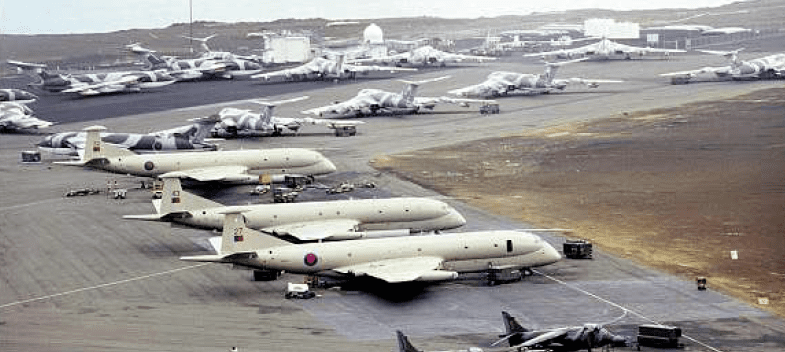
Although the Vulcan raids, carried out in almost total radio silence, had done little permanent damage to the airfield and air defence radars, it must be remembered that they were carried out at extreme range by only a single aircraft. Nevertheless, it should also be recognised that the Black Buck raids had a profound psychological effect on the Argentine troops occupying the Falklands, who for the first time were made to realise that they would have to fight if they hoped to retain the Malvinas, as they called the Islands.
Six months later, 44 Squadron, the last to operate the Vulcan bomber, disbanded, although a few Vulcans that had been converted to tankers remained in service until March 1984. The Victor tanker would survive another decade of service, and another conflict – the first Gulf War.


